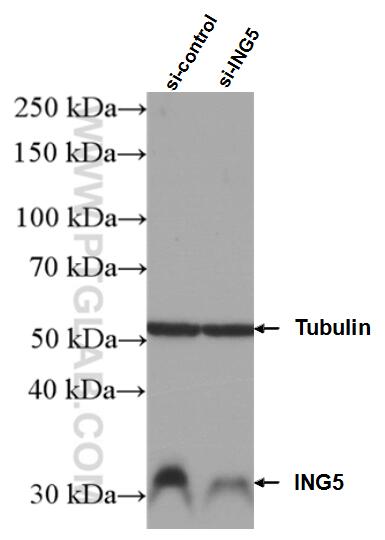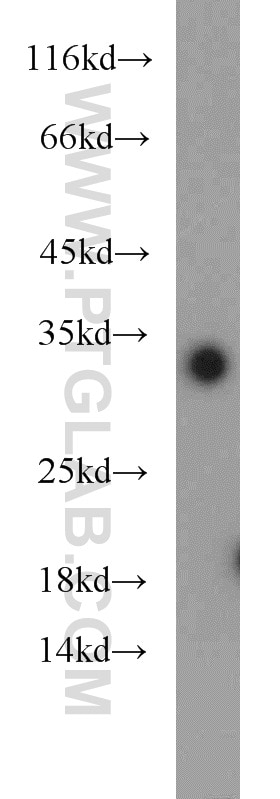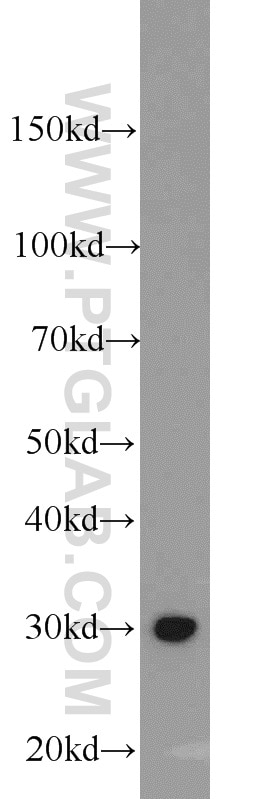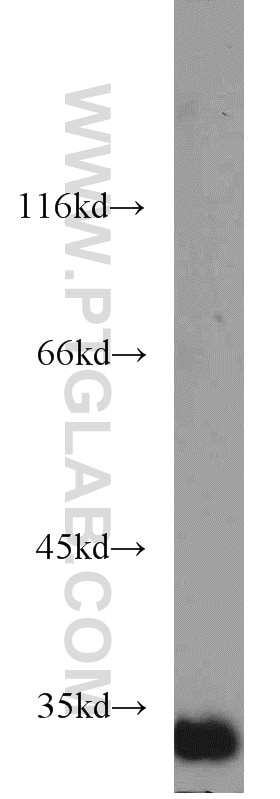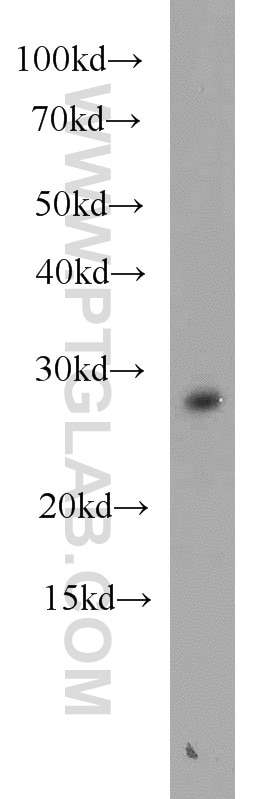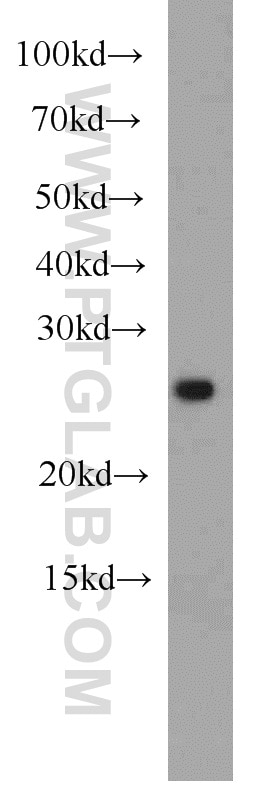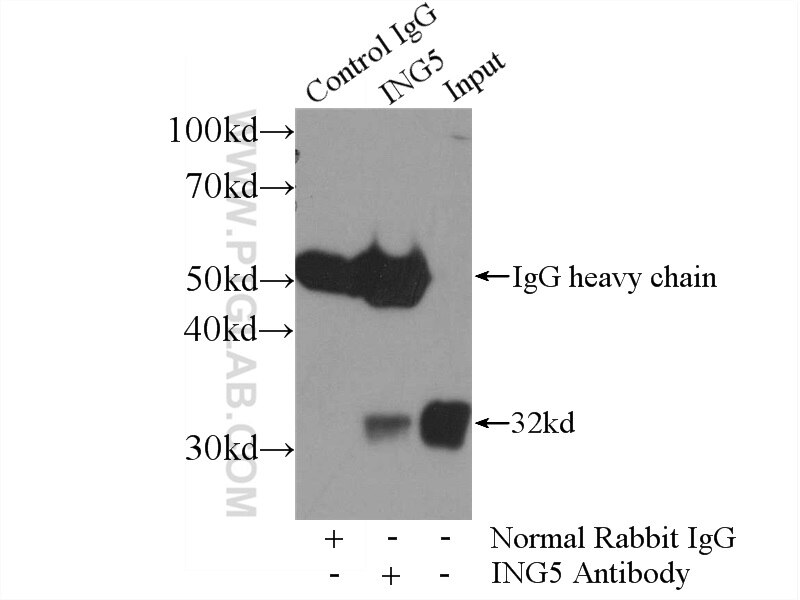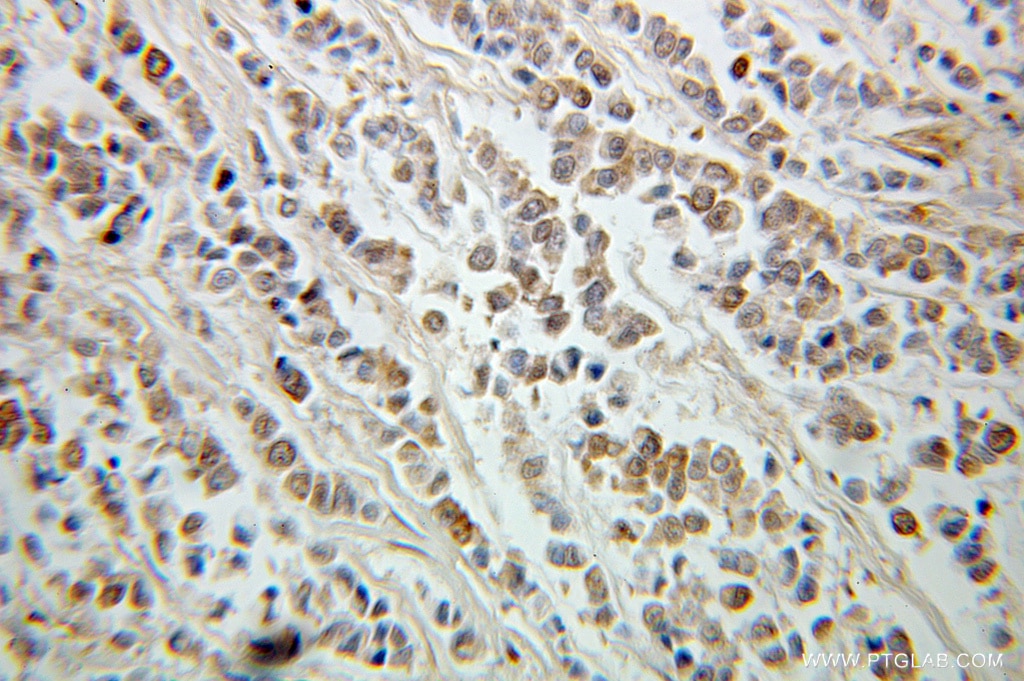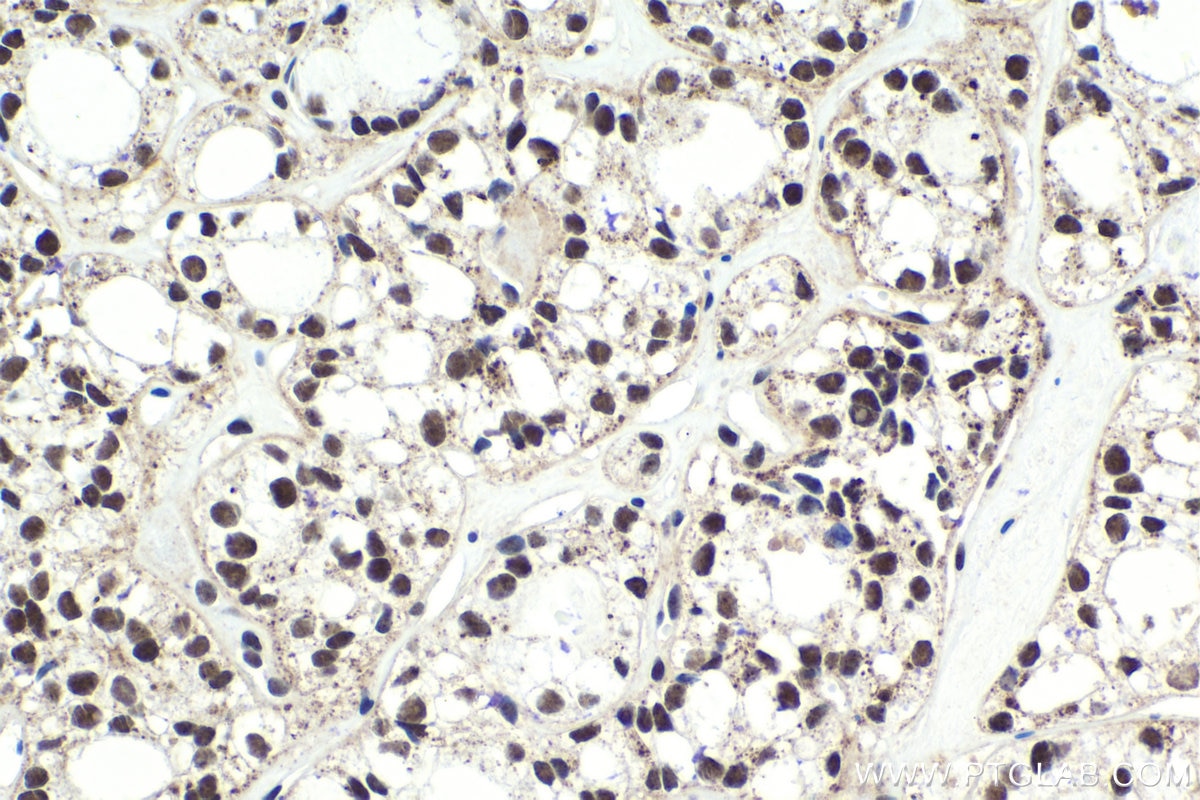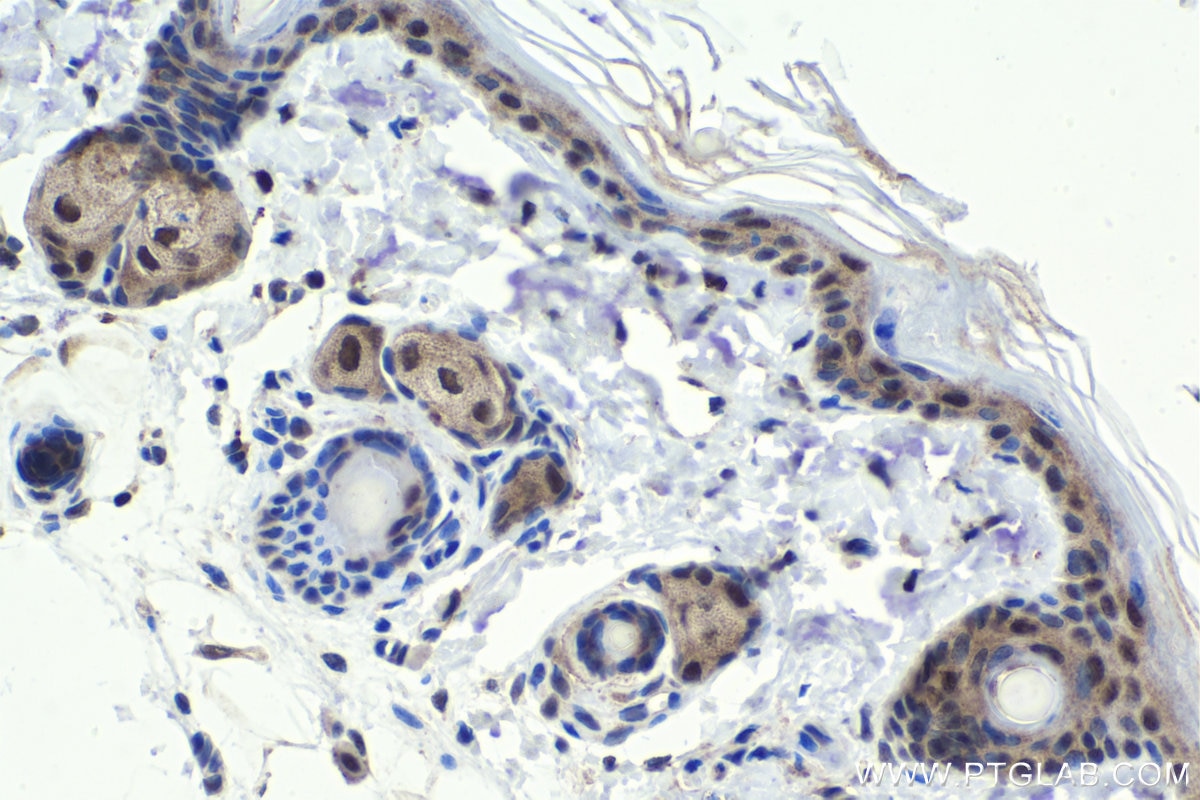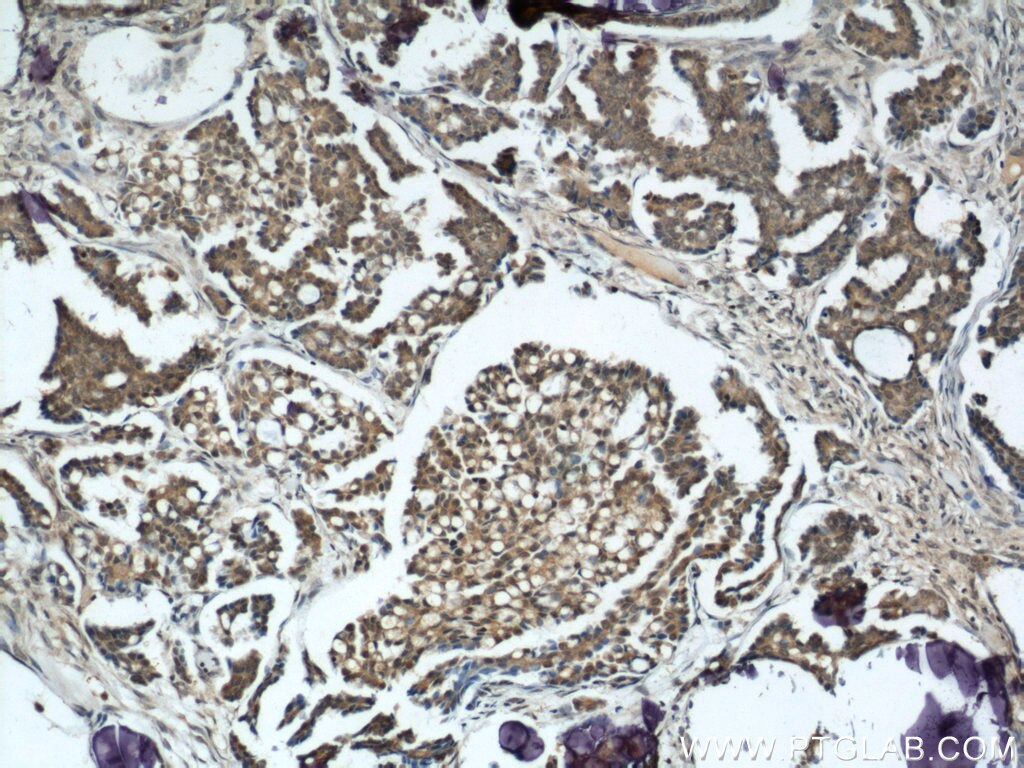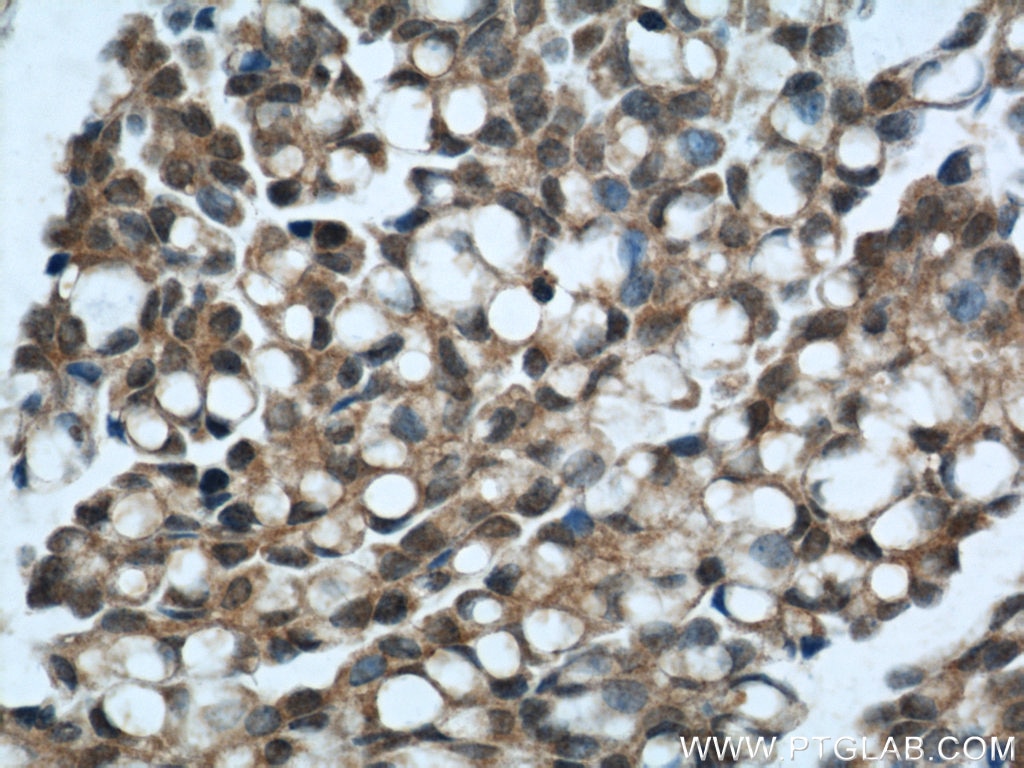- Phare
- Validé par KD/KO
Anticorps Polyclonal de lapin anti-ING5
ING5 Polyclonal Antibody for WB, IHC, IP, ELISA
Hôte / Isotype
Lapin / IgG
Réactivité testée
Humain, rat, souris
Applications
WB, IHC, IF, IP, ELISA
Conjugaison
Non conjugué
N° de cat : 10665-1-AP
Synonymes
Galerie de données de validation
Applications testées
| Résultats positifs en WB | cellules Jurkat, cellules HEK-293, cellules PC-3, tissu rénal de souris |
| Résultats positifs en IP | cellules HEK-293 |
| Résultats positifs en IHC | tissu de cancer du côlon humain, tissu cutané de rat, tissu de cancer de la thyroïde humain, tissu de tumeur ovarienne humain, tissu rénal de souris il est suggéré de démasquer l'antigène avec un tampon de TE buffer pH 9.0; (*) À défaut, 'le démasquage de l'antigène peut être 'effectué avec un tampon citrate pH 6,0. |
Dilution recommandée
| Application | Dilution |
|---|---|
| Western Blot (WB) | WB : 1:500-1:1000 |
| Immunoprécipitation (IP) | IP : 0.5-4.0 ug for 1.0-3.0 mg of total protein lysate |
| Immunohistochimie (IHC) | IHC : 1:20-1:200 |
| It is recommended that this reagent should be titrated in each testing system to obtain optimal results. | |
| Sample-dependent, check data in validation data gallery | |
Applications publiées
| KD/KO | See 5 publications below |
| WB | See 22 publications below |
| IHC | See 10 publications below |
| IF | See 5 publications below |
Informations sur le produit
10665-1-AP cible ING5 dans les applications de WB, IHC, IF, IP, ELISA et montre une réactivité avec des échantillons Humain, rat, souris
| Réactivité | Humain, rat, souris |
| Réactivité citée | rat, Humain, souris |
| Hôte / Isotype | Lapin / IgG |
| Clonalité | Polyclonal |
| Type | Anticorps |
| Immunogène | ING5 Protéine recombinante Ag1059 |
| Nom complet | inhibitor of growth family, member 5 |
| Masse moléculaire calculée | 28 kDa |
| Poids moléculaire observé | 28-32 kDa |
| Numéro d’acquisition GenBank | BC005370 |
| Symbole du gène | ING5 |
| Identification du gène (NCBI) | 84289 |
| Conjugaison | Non conjugué |
| Forme | Liquide |
| Méthode de purification | Purification par affinité contre l'antigène |
| Tampon de stockage | PBS with 0.02% sodium azide and 50% glycerol |
| Conditions de stockage | Stocker à -20°C. Stable pendant un an après l'expédition. L'aliquotage n'est pas nécessaire pour le stockage à -20oC Les 20ul contiennent 0,1% de BSA. |
Informations générales
ING5, also named as p28ING5, belongs to the ING family. It is a component of the HBO1 complex which has a histone H4-specific acetyltransferase activity, a reduced activity toward histone H3 and is responsible for the bulk of histone H4 acetylation in vivo. ING5 is a component of the MOZ/MORF complex which has a histone H3 acetyltransferase activity. Through chromatin acetylation it may regulate DNA replication and may function as a transcriptional coactivator. (PMID:12750254) Altered ING5 expression and its shift into the cytoplasm may have an impact on the malignant transformation of colorectal epithelial cells and should be considered as a biomarker for colorectal carcinogenesis. (PMID:21193223)
Protocole
| Product Specific Protocols | |
|---|---|
| WB protocol for ING5 antibody 10665-1-AP | Download protocol |
| IHC protocol for ING5 antibody 10665-1-AP | Download protocol |
| IP protocol for ING5 antibody 10665-1-AP | Download protocol |
| Standard Protocols | |
|---|---|
| Click here to view our Standard Protocols |
Publications
| Species | Application | Title |
|---|---|---|
Cell Res LRP6 downregulation promotes cardiomyocyte proliferation and heart regeneration.
| ||
Oncotarget The miR-193a-3p-regulated ING5 gene activates the DNA damage response pathway and inhibits multi-chemoresistance in bladder cancer. | ||
Oncotarget ING5 inhibits cancer aggressiveness via preventing EMT and is a potential prognostic biomarker for lung cancer. | ||
Oncotarget ING5 suppresses proliferation, apoptosis, migration and invasion, and induces autophagy and differentiation of gastric cancer cells: a good marker for carcinogenesis and subsequent progression.
| ||
Oncotarget Upregulated in Hepatitis B virus-associated hepatocellular carcinoma cells, miR-331-3p promotes proliferation of hepatocellular carcinoma cells by targeting ING5.
|
